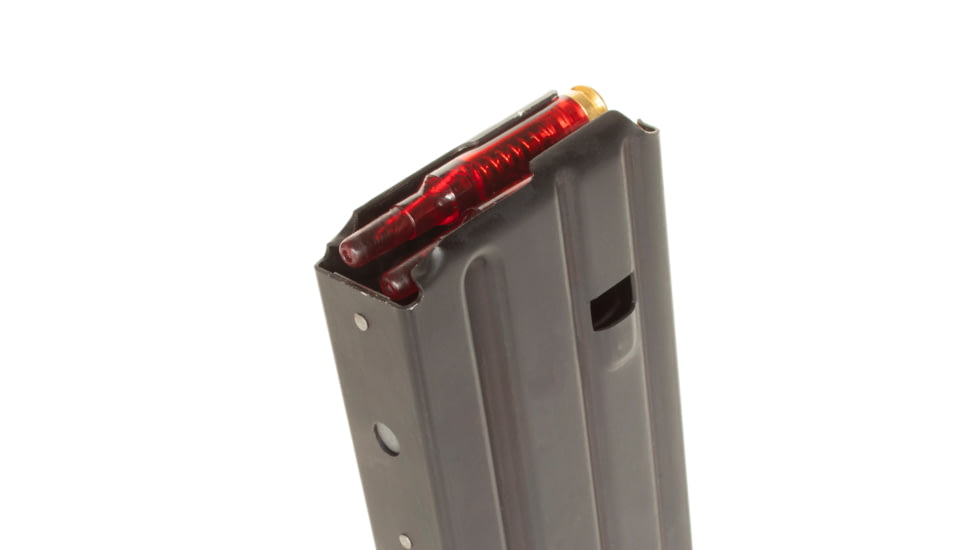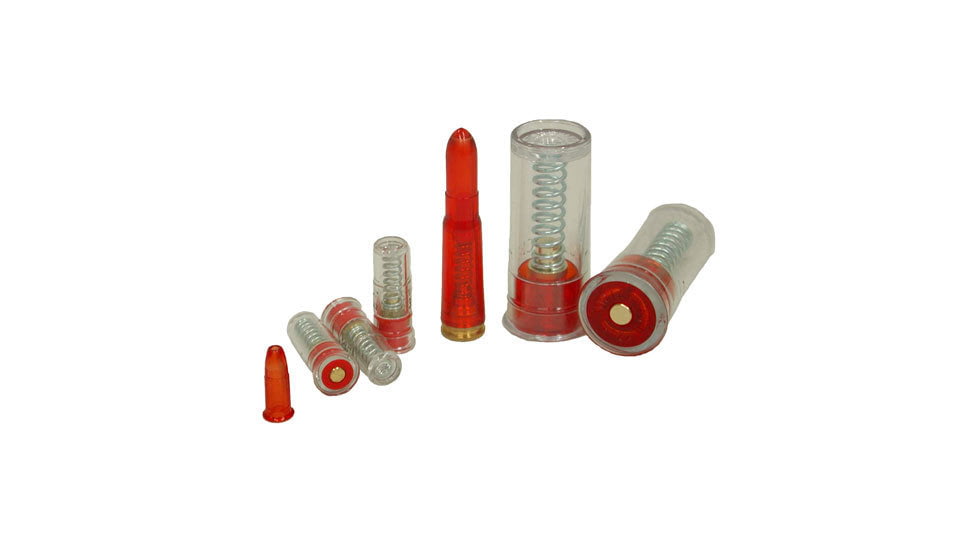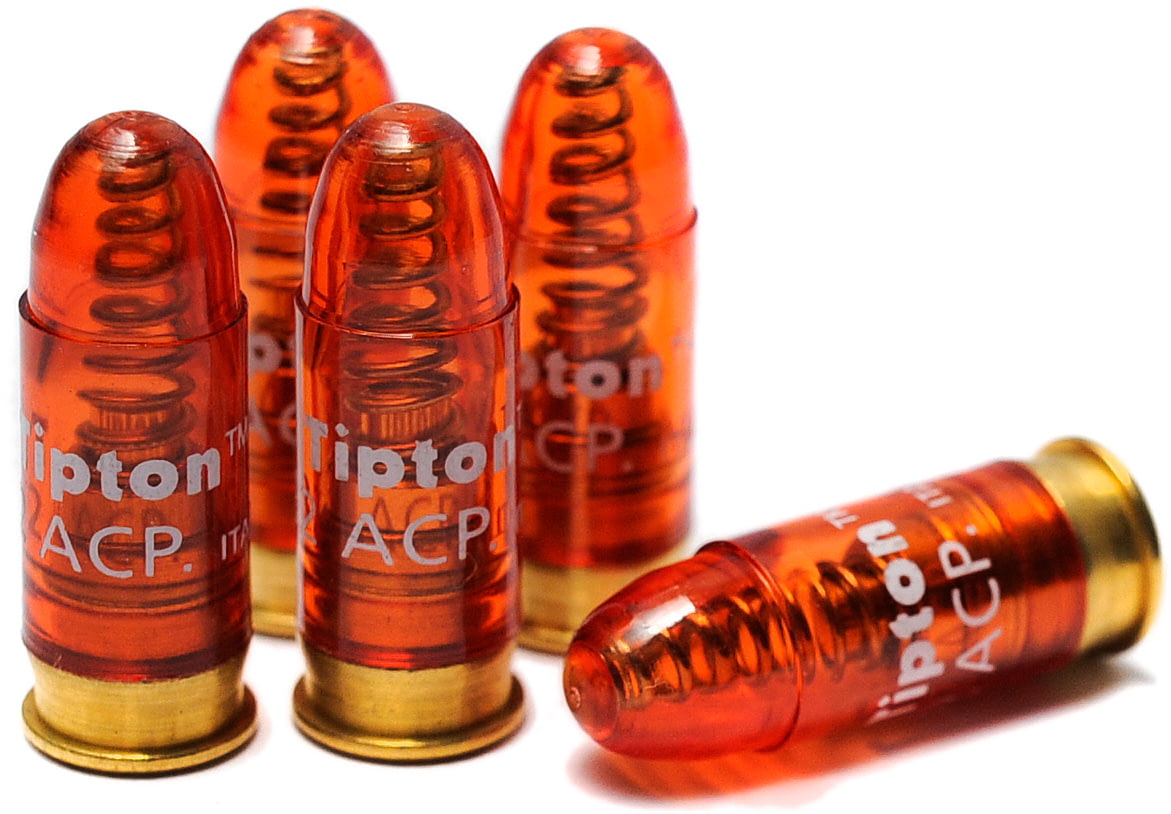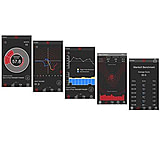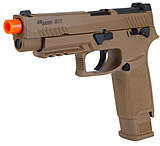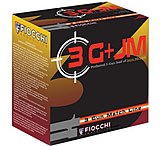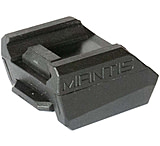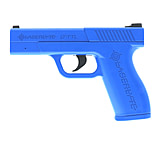If you've ever wondered, "What are snap caps?" or "What are snap caps used for?", read on! In this piece, we'll cover everything you need to know about how to use snap caps and the different applications of snap-caps vs. dummy rounds. We'll introduce you to what they are, how they work, and why you should be using them in every firearm you own.![]()
What Are Snap Caps?
Snap-caps are simulated ammunition cartridges that have a spring where the primer is usually located. They are not live ammunition in any way and you shouldn't confuse them with noisemakers like cap guns. They may come with a flat nose, and those are best used in revolvers, shotguns, and break-action breechloaders. The flat-nose models also tend to be plastic. Then there are the models that are exact replicas of the cartridge, including the shape of the bullet. These are usually made of metals like aluminum, are more durable, and perform very well in semi-automatics.
- How do snap caps work? Snap caps work by allowing the firing pin to drop without potentially damaging it by falling on an empty chamber, usually falling on a spring-type button where the primer on a loaded cartridge is located.
- Are snap caps reusable? Yes, snap caps are reusable and can be used many, many times before they wear out. They are more durable than dummy rounds.
- Do snap caps eject? Yes, but not automatically. You have to work the action each time you cycle one since there's no powder or primer in them.
Dummy Rounds
Dummy rounds are also inert simulations of ammo cartridges, with a few key differences. Most dummy rounds don't have a spring where the primer is located. Some have a flexible centerfire "primer" made of polymer, but many don't have this feature. If they don't have this, then repeated use will cause them to have a dent where the firing pin impacts, and the dummy bullets will eventually need to be replaced.
When it comes to rimfires like .22's, dummy rounds are the only solution because there is no center primer. Additionally, rimfire guns should never be dry-fired because the pin lands on the breech face and can severely damage the gun. For this reason, dummy rimfire rounds are essential, even though they will need to be replaced more frequently than a snap-cap. It's a small price to pay in comparison to replacing your firing pin.
What Are Snap Caps Used For?
We've already covered the importance of dummy rounds in rimfires, but there are plenty of benefits for centerfires, too. They allow that same protection to your firing pin, extending its overall life. They're the cheapest way to practice since dry firing doesn't use any ammunition. They're also the safest way to practice since they're inert, and their distinctive colors make them easy to differentiate from actual live ammunition. You can also practice dry firing at home instead of a range or outside in poor weather.
Dry-Fire Training
In a nutshell, dry-fire training is practicing your shooting skills without live ammunition. It's practiced by professionals in both competitive shooting and those who carry a firearm every day in their line of employment. Therefore, it makes sense that we should all be practicing dry-fire training. If you're hunting, target shooting, or have a firearm for personal defense, you owe it to yourself to start as soon as possible.
Training Away Those Bad Habits Before & After They're Formed
When new shooters are training, it's always best to start with learning good habits instead of forming bad habits that need to be corrected in the future. For more experienced shooters, they may already have those bad habits and need to re-train themselves. As we mentioned, even the pros consistently practice dry fire, so there isn't anyone who won't benefit from it. Anyone who's ever trained a kid on how to shoot will appreciate the easy visibility and ensure that they're practicing proper firearm safety skills without a live round in the chamber.
By allowing the shooter to focus on trigger control and nothing else, snap-caps and dummy rounds help condition shooters away from anticipating the shot. Anticipating the shot puts the shooter into an excited state instead of the calm that is required for consistent accuracy. This is when we see the major issues that negatively affect shooting performance:
- Pulling the trigger instead of squeezing it
- Flinching
- Locking up the body
- Blinking/closing the eyes, or even turning the head away
These can all be the result of anticipating the felt recoil and/or the report (sound) of gunfire. In actuality, the recoil and noise happen long after the bullet has left the muzzle. If you're tensed up and anxious about what's going to happen instead of focusing on what is happening, odds are you're going to pull the shot every time. When you practice trigger control, your only focus is squeezing the trigger back until it breaks (releases) and drops the firing pin on the cartridge.
Real-Life Scenario Drills
Snap-caps and dummy rounds are excellent tools for dry-fire drills that mimic real-world scenarios. They can be chambered and will feed just like live ammunition. You can use snap caps in almost every type of gun except rare calibers. Snap caps are most commonly used with:
- Handguns, both semi-automatics or revolvers
- Rifles in semi-auto, bolt-action, pump-action, or lever-action
- Tube-fed magazines, commonly found on shotguns
- Any break-action or breechloader
- Popular calibers like .380, 9mm, .38 Special, .223/5.56mm, 12 gauge, etc.
Real-life scenario drills are just that: things that are likely to come up in a situation while carrying. They have value in hunting but are most usually practiced for self-defense. They include the most common required skills that should be repeated to ingrain and reinforce muscle memory:
- Draw & fire a handgun from a holster that will be used for EDC (Every-Day Carry)
- Quick cylinder or press checks to ensure a round is chambered
- Malfunction drills, most commonly on semi-automatic rifles and handguns, to ensure that the action can be cleared and another round chambered as quickly as possible without sacrificing safety
Carry & Storage
Many older-style revolvers lack any kind of mechanical safety, so it's recommended that they be carried with the hammer resting on an empty chamber to prevent accidental discharge. Snap-caps or dummies are perfect for this application. The shooter can easily see the inert cartridge in the cylinder when loading or carrying. If the shooter loses count of shots fired, when the hammer drops on the last chamber with the dummy or snap-cap, there will be no damage or wear from dry-firing.
They're also great for transporting firearms to and from the field or range. For those who carry, especially where local laws prohibit a live round in the chamber, they're very useful for ensuring that they're on an "empty" chamber with a quick check. Their distinctive colors make them hard to mistake for live rounds.
When storing firearms, it's best to store them with the hammer or firing pin down to reduce the tension on the firing spring and preserve its life over the long term. Snap-caps and dummies serve this purpose well, along with giving you that same quick visual inspection to ensure that there isn't a live round chambered during storage. They'll stand up to the gun oil your cleaned gun should have when you put it away, too.
Summing It Up
At this point, you should have a strong understanding of how to use snap caps and the benefits they provide. Anyone who owns a gun really should have some form of inert cartridges for every gun they own. Beyond training new shooters and honing skills with dry-fire practice, they can help protect and preserve your guns during long-term storage. Shop our large assortment of snap-caps and dummy rounds, share this article, or leave a comment letting us know what you think!










